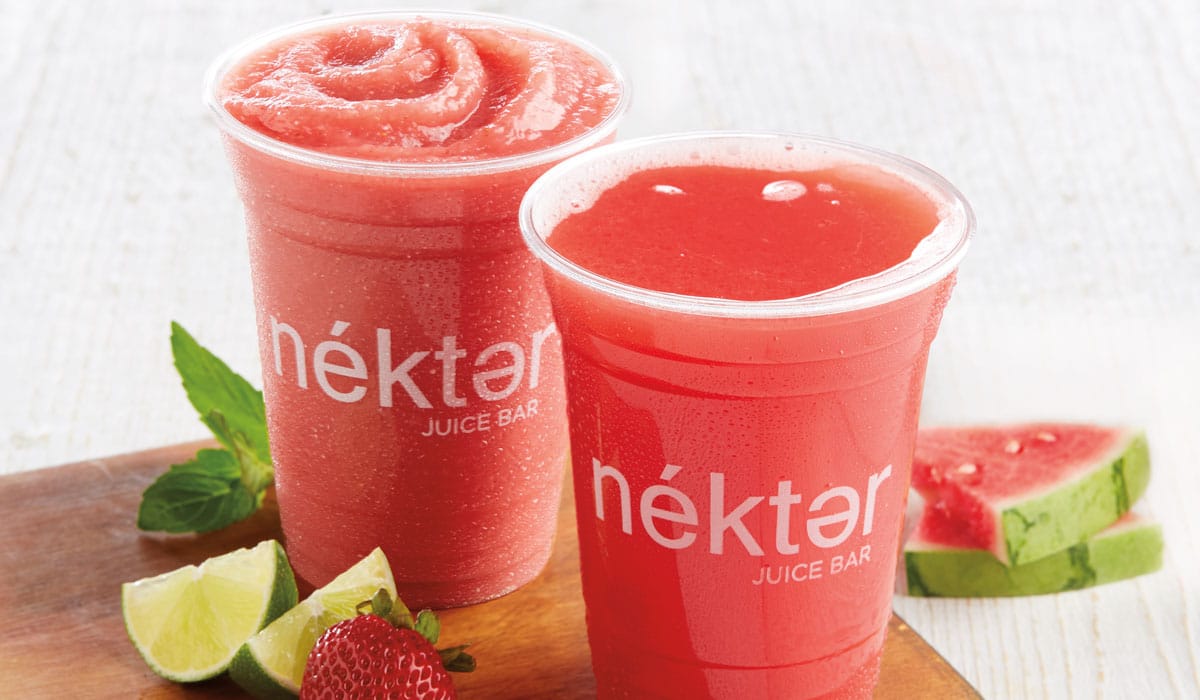Mid-way through winter, many restaurants are looking ahead toward their spring and summer menus. While culinary leaders consider which flavorful dishes will best appeal to guests in warmer months, beverages play an equally important role in attracting consumers, particularly as consumers continue shifting their focus toward health and nutrition.
“Beverages offer restaurants a refreshing way to connect with consumers,” says Tony Pereyra, bar and beverage specialist at The Spirits in Motion, a consultancy that helps restaurant operators develop their beverage programs. “Juices and smoothies in particular offer a healthy halo and allow guests to focus on nutrition.”
While consumers have gravitated toward healthier eating for the past several years, this focus has intensified during the pandemic. Last year, Datassential reported that 78 percent of consumers believed diet had a major impact on how well the body fights against illnesses. Meanwhile, 44 percent said that healthier eating was an important lifestyle change they made during the pandemic. However, finding the right mix of nutrients can be challenging with a busy schedule.
“Before Nekter, I was running all over the place and was unable to get enough fruits and vegetables into my diet,” says Alexis Schulze, co-founder and chief visionary officer of Nekter Juice Bar. “We founded Nekter because we’re all so busy, and juices and smoothies offer a convenient way to consume fruits and vegetables in a way that tastes better than just eating a plate of kale, parsley, and spinach.”
As Schulze notes, just because Americans want to eat healthier doesn’t mean that they want to sacrifice flavor. Instead, they turn toward offerings featuring ingredients that simultaneously offer the health benefits they want with familiar flavors they crave. One such ingredient, she says, is watermelon.
“Not only does watermelon have many incredible health benefits, but it also tastes good and reminds people of summers in their childhoods when they’d eat a wedge of watermelon,” Schulze says. “All this makes it an easy sell for restaurants.”
Watermelon is American Heart Association Heart-Check Certified, and the fruit is naturally cholesterol-free, fat-free, sodium-free, and has only 80 calories per serving. Additionally, because a watermelon is 92 percent water, it helps diners stay hydrated. Watermelon also contains nutrients that support hearth health, such as 6 percent of the recommended DV (daily value) of magnesium, as well as other important nutrients, such as 8 percent of the recommended DV of Vitamin A, 6 percent of the recommended DV of Vitamin B6, 25 percent of the recommended DV of Vitamin C, and 6 percent of the recommended DV of potassium. The USDA also notes that each 2 cup serving of watermelon contains 12.7 grams of lycopene per 2 cup serving, which is higher than any other fresh fruit or vegetable.
However, Pereyra says restaurants also see operational benefits from watermelon.
“The bright red color is attractive to the eye and pops when operators use interesting to-go cups or vessels that highlight the color,” Pereyra says. “It can also be served in many applications from non-alcoholic juices, smoothies, and seltzers all the way to mocktails and cocktails. Plus, it pairs well with a variety of flavors, whether a brand is looking for a sweet summer beverage or one with a spicy kick that pairs well with South American or Mexican flavors.”
Schulze notes that with the right training, watermelon is an easy ingredient for kitchen staff to work with. Pereyra agrees, noting that while watermelon can be used across the menu, it’s important to train staff on how to safely and efficiently cut a watermelon to get the maximum yield.
“Before you start to break down a watermelon to puree, think about how you want to garnish your drink and start with those cuts, such as wedges, diced, planks, balls, or other formats so that any scraps can go right into the blender,” Pereyra says. “If you make pickles in-house, have a plan for saving the rind.”
However, watermelon isn’t just a functional ingredient that makes for refreshing beverages—it can also serve as a powerful sales driver when it’s menued and marketed effectively, Schulze says.
“We feature watermelon on our menu in summertime, including our Watermelon Mint Juice and Strawberry Watermelon Smoothie,” she says. “Whenever we do social media posts about our watermelon beverages, they always get more comments than our other LTOs, and our customers go nuts.”
In fact, Nekter reported that watermelon juice made up a whopping 8 percent of the brand’s total juice sales during the 2020 promotional period, which was an increase of 4 percent over the previous year. Similarly, the watermelon smoothie made up 9 percent of the brand’s smoothie sales during the same time period, which was up 3 percent compared to 2019.
Nekter isn’t alone in offering the popular fruit in beverages. In 2019, Datassential published a MenuTrends Research report created in partnership with The Watermelon Promotion Board that stated watermelon is already featured on 3.4 percent of non-alcoholic beverage menus and has experienced triple digit growth over the past decade. Additionally, more than a third of non-alcoholic watermelon beverages are blended drinks, including smoothies, slushies, and milkshakes.
With a 5.4 percent penetration rate, watermelon is also the fastest growing fruit in smoothies. Meanwhile, Datassential notes that watermelon is in the 98th percentile for future menu growth and expects the fruit to reach 16 percent menu penetration by 2022.
Though watermelon will see even wider usage across the industry in years to come, it’s clear the popular fruit provides a significant opportunity for restaurants now.
“Watermelon beverages are hands down our best-selling LTOs,” Schulze says, “and the fruit is really such a great base for any type of beverage, whether it’s a cocktail or juice or smoothie. You can really get creative with it and make something guests will love.”
To learn more about how to use watermelon on your beverage menu, visit the National Watermelon Promotion Board website.
By Peggy Carouthers













